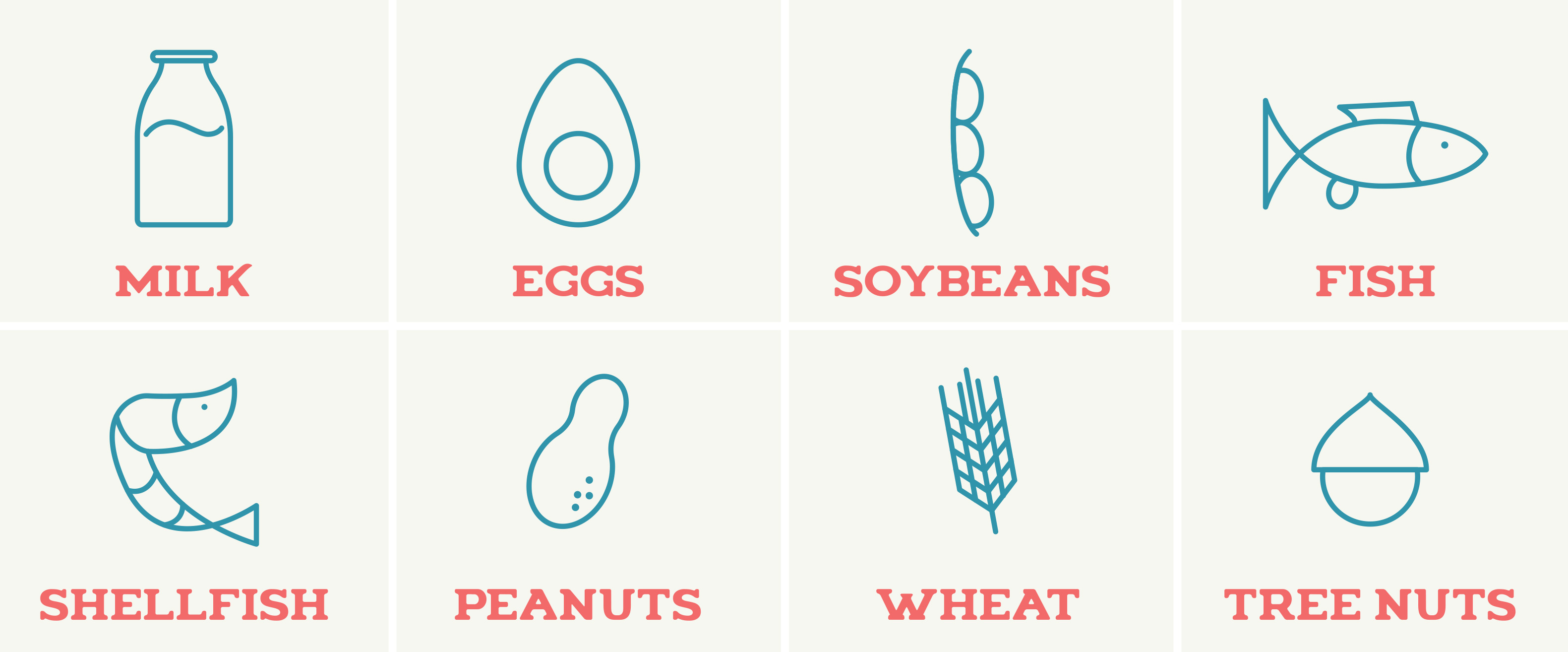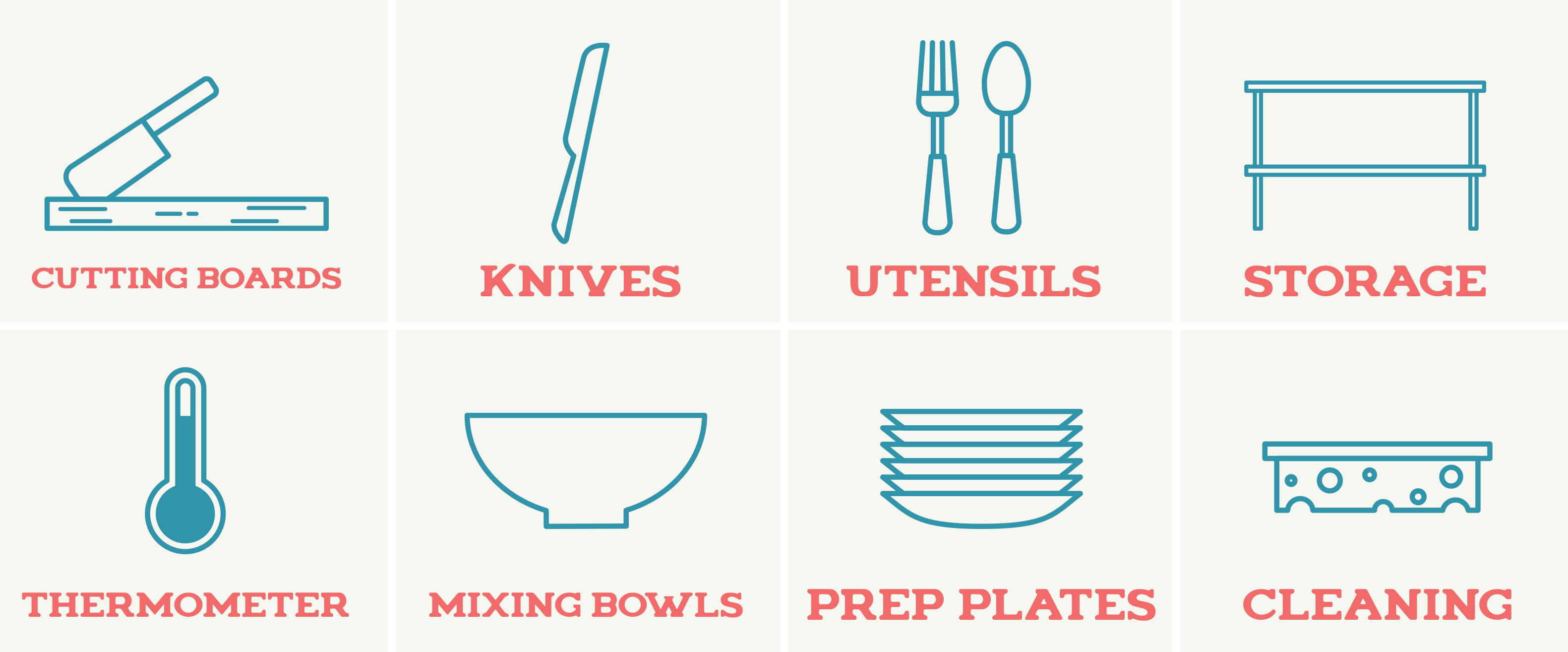Anaphylaxis, Hives, and Color-Coded Kitchenware: Some Tips to Help Make Your Kitchen Food Allergy Friendly
Recently there has been a rise in food allergy awareness across the nation. Standards are getting set and manufacturers expected to keep them.
Anaphylaxis. Hives. Bronchospasm. These are scary sounding words with scary implications when you consider them as a possible outcome at your restaurant. A customer could experience one of these or other allergic reactions in your cafe as a result of eating something prepared in your facility.
Recently there has been a rise in food allergy awareness across the nation. Standards are getting set and manufacturers expected to keep them. More and more establishments are even voluntarily trying to accommodate common food allergies because of this increased national awareness. It is unavoidable, people are concerned about what they're putting in their bodies and their kids' bodies. People are also increasingly expecting establishments to offer them safe options. So the question is not "should I provide allergy friendly options?" but rather, "how do I provide allergy friendly options?"
Common Allergies and A Lot of Affected Americans
A good place to start is to consider what allergen-free options you want and need to offer. There are 8 allergens that are considered the most common, accounting for 90% of food related allergic reactions (Researchers estimate upwards of 15 million Americans live with some level of food allergies). These top eight are eggs, milk, soybeans, fish, shellfish, treenuts, peanuts, and wheat. It is well worth the investment to make your kitchen allergy friendly when you consider how many more families you will be able to accommodate.

What you need to know about making your kitchen allergy friendly
Supplies!
So what does your Allergy Friendly Kitchen need? Consider these 8 categories: cleaning supplies (brooms, mops, sponges, etc.), cutting boards, knives, utensils, storage containers and locations, thermometers, mixing bowls, and prep plates. The most identifiable way to keep these items separate is to color code them with the allergen you wish to avoid. So for instance, your Milk Allergy container could be yellow, identifying to your staff that this container should never contain milk or any milk related products.

Why a designated area is so important
For a truly allergy friendly kitchen you'll need to have dedicated allergen-free zones. This includes a prep station for food and storage space. If your space and resources are limited consider having one designated area that is in a neutral area from the air draft in your kitchen (believe it or not cross contamination can occur from transfer in the air current!). This station should have it's own color coded and designated cleaning supplies, cutting boards, knives, utensils, thermometers, mixing bowls, and prep plates. Thorough washing in between each use is very important, especially if you are limited to only one color coded system instead of separate materials for each allergy. You can make one area and one system work, it will just take some extra elbow grease and careful attention to cleanliness. Separate, color coded, air-tight containers are still best practice to drastically decrease cross contamination, but remember, storing your rice flour container under your wheat flour container can result in dangerous cross-contamination. It is vital to keep allergen-free containers in a separate space completely (if possible) or when space is limited recruit gravity on your side by keeping allergen-free containers above the rest of your stock to help lessen the chances of cross-contamination.
A few more things about cleaning you may not know
In addition to structuring your kitchen to accommodate allergy awareness it is also crucial to train your staff in proper washing of these containers between each use, as mentioned above, in order to minimize cross-contamination. This is especially important in cases where your customer has multiple allergies. Proper washing of each container between each use requires thorough cleaning with unused, warm, soapy water with designated allergen-free cleaning tools, thorough rinsing, and then drying on or by a new, (first use since last wash) designated allergen-free towel.
Before you go...
It is important to let your patrons know that you are working hard to provide them with safe treats. Part of that is remembering to provide a disclaimer that lets them know that even though you're taking great precaution there are still cross contamination risks because dishes containing allergens are still prepared in your kitchen.
Some of these changes are straightforward and simple, requiring very little investment in time and resources. Other changes, such as allergen free storage and prep space, will require extra effort and investment in time and money. We'd love to help you get started with your allergy-friendly needs! Check out these color coded Vitamix containers! They are the perfect, easily identifiable, container to help keep your blended drinks, salsas, ice creams, etc. allergen free. This saves cleaning time for your employees, frustration in finding containers marked with easy-to-miss labels, and is one of the ways to significantly reduce cross-contamination. Take a peek and find out more!



